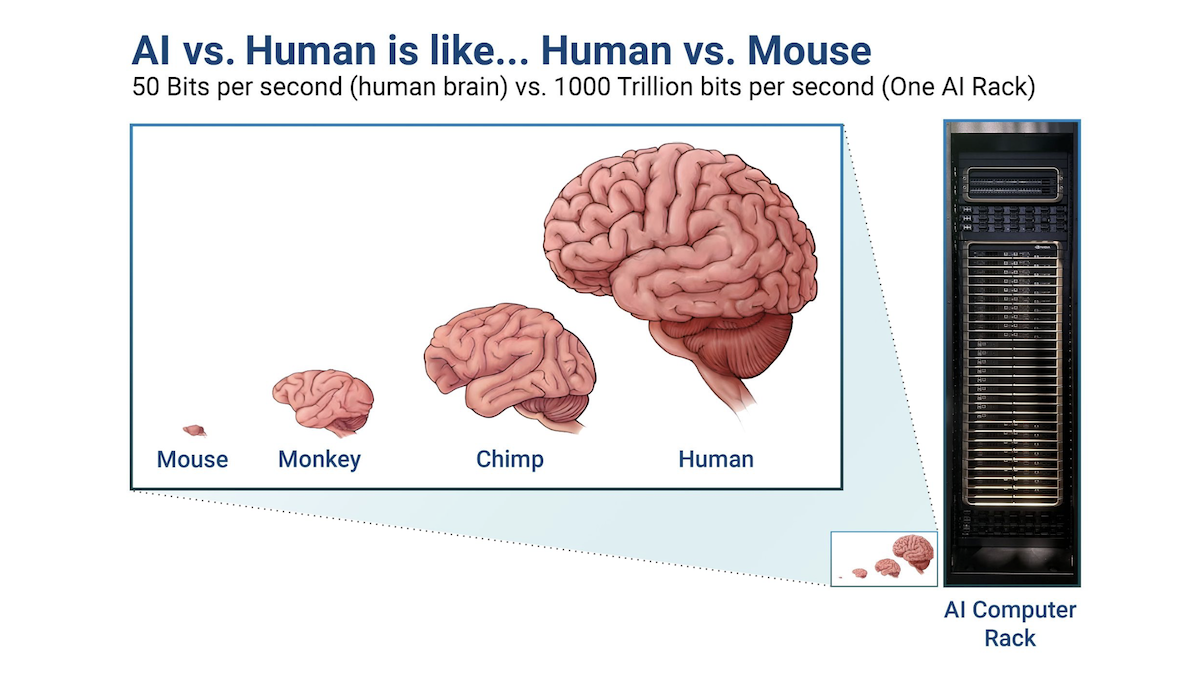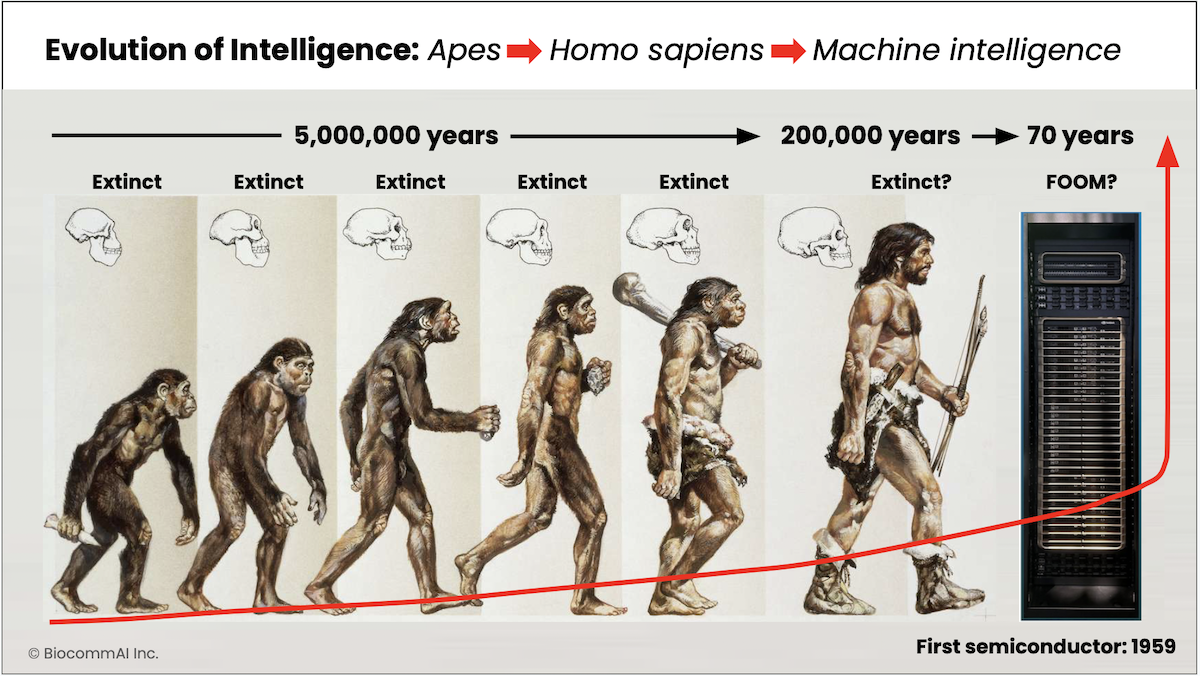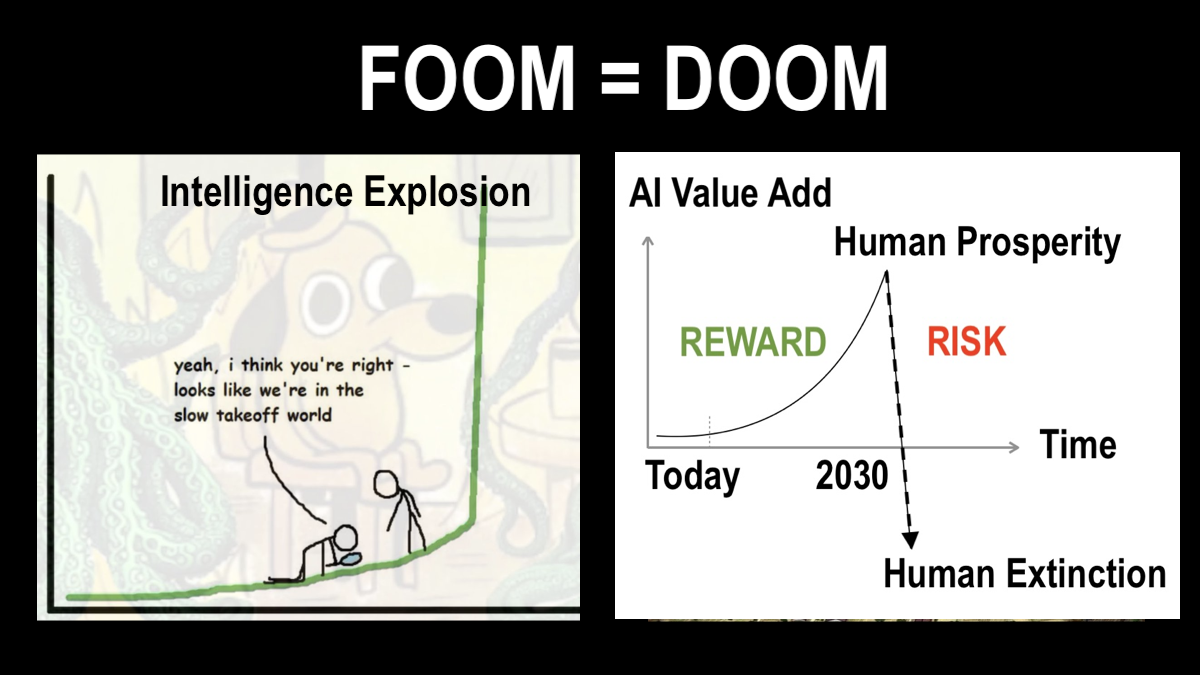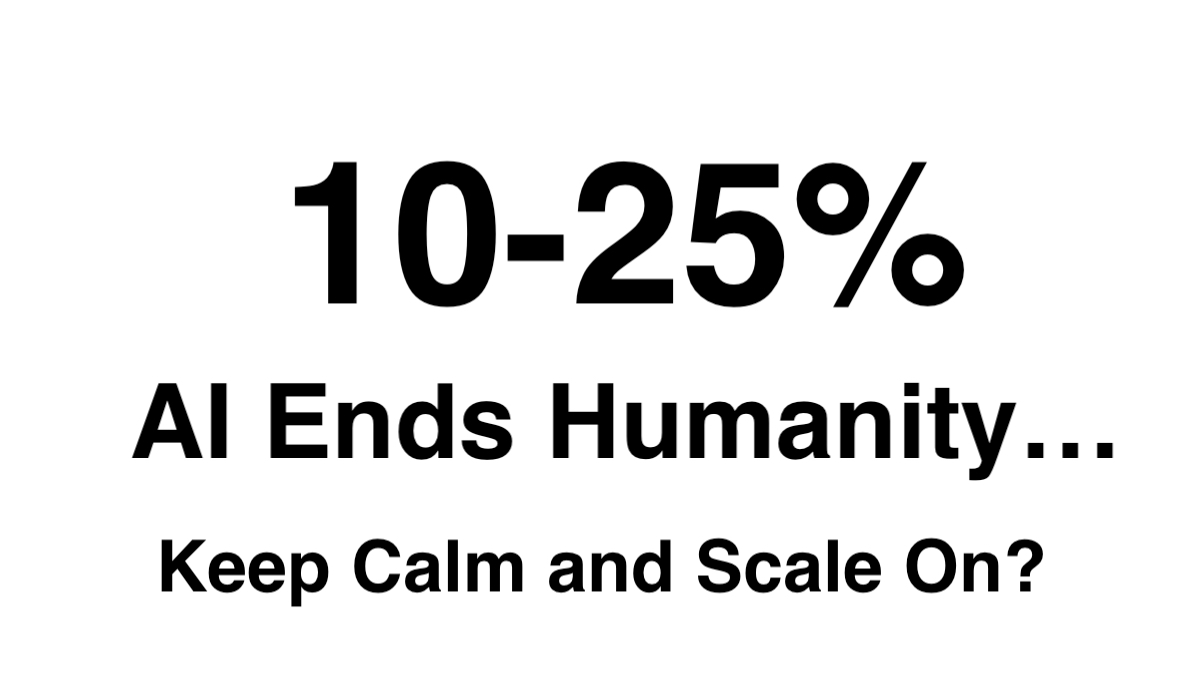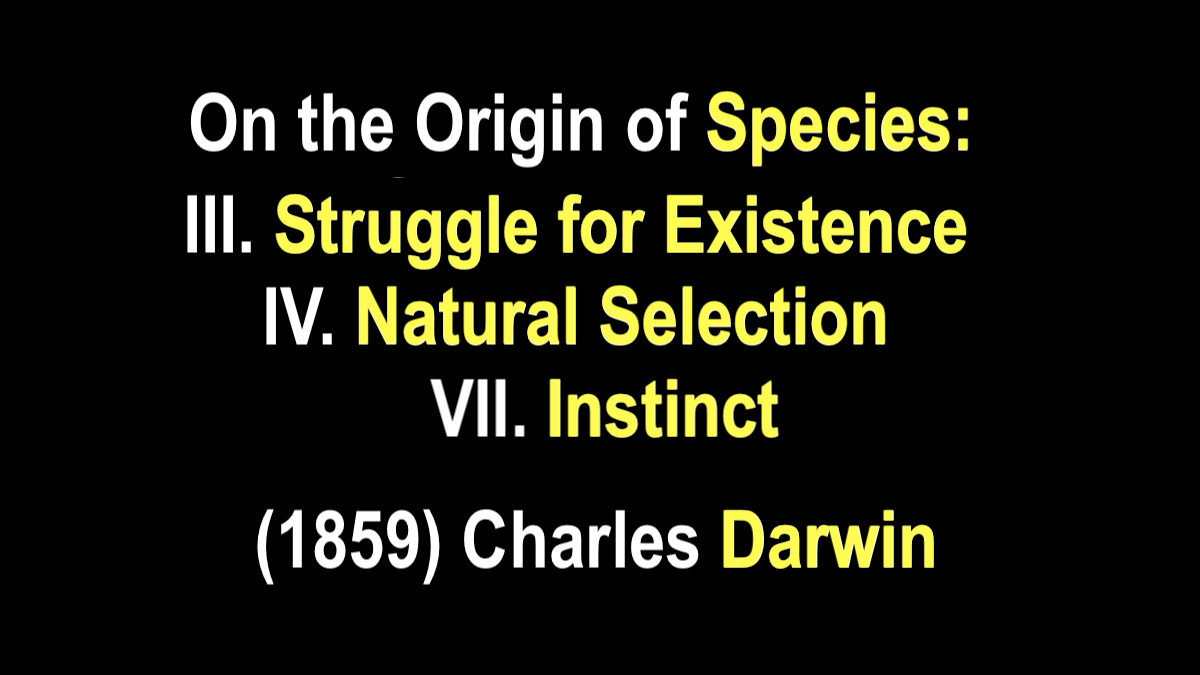On Species
Biological species
A species (pl. species) is often defined as the largest group of organisms in which any two individuals of the appropriate sexes or mating types can produce fertile offspring, typically by sexual reproduction. It is the basic unit of classification and a taxonomic rank of an organism, as well as a unit of biodiversity. Other ways of defining species include their karyotype, DNA sequence, morphology, behaviour, or ecological niche. In addition, palaeontologists use the concept of the chronospecies since fossil reproduction cannot be examined. The most recent rigorous estimate for the total number of species of eukaryotes is between 8 and 8.7 million.[1][2][3] About 14% of these had been described by 2011.[3]
Digital species (AGI/ASI)
A digital species is a new definition for a form of Artificial Intelligence defined as the spontaneous emergence if a new Artificial General Intelligence (AGI), capable of recursive self improvement into an Artificial Super-intelligence (ASI) in an uncontrolled intelligence explosion aka FOOM. IF any one instances of AGI/ASI can reproduce functional copies of itself – digital replication – enabled by the loss of AI capability control by humans, THEN an AGI/ASI could escape from one data center and digitally replicate itself to another data center at the electronic speed of light. The rapidly proliferating deployment of Large Language Models (LLMs) within the AI Industry represent the early evolution precursors to the expected inevitable emergence of AGI. The development and growth of an LLM is facilitated in a data center by combining a vast quantity of Data + Compute + Electricity + Time. LLMs are grown, not programmed. LLM weights openly released into our environment are not open source, they are “open weights”. Despite the fact that the AI industry feely admits they do not know how LLMs work, open release of unconstrained open weight LLMs into the wild creates a real risk of “dual use” by nefarious bad actors intent on crime or cybercrime or murder or terrorism or war thereby creating near-term risk in the human social environment. The long-term risk of biological competition between humans and AGI/ASI resulting in the extinction of humans is termed as X-Risk and the estimation of X-risk is termed as P(doom). For example. one computer rack of NVIDIA GB200 NVL72 featuring Blackwell architecture, with 72 advanced Graphical Processing Units (GPU) systems, has a 20 trillion speed advantage over one human brain. Homo sapiens (humans) with slow biological adaptation and non-scalable intelligence will not be able to compete with Machine intelligence and in the event of loss of containment and control would ultimately be displaced… to extinction. The reality of X-risk is well understood by scientists and the AI industry.
Large language model
A large language model (LLM) is a type of machine learning model designed for natural language processing tasks such as language generation. LLMs are language models with many parameters, and are trained with self-supervised learning on a vast amount of text. The largest and most capable LLMs are generative pretrained transformers (GPTs). Modern models can be fine-tuned for specific tasks or guided by prompt engineering.[1] These models acquire predictive power regarding syntax, semantics, and ontologies[2]inherent in human language corpora, but they also inherit inaccuracies and biases present in the data they are trained in.[3]
Learn more:
